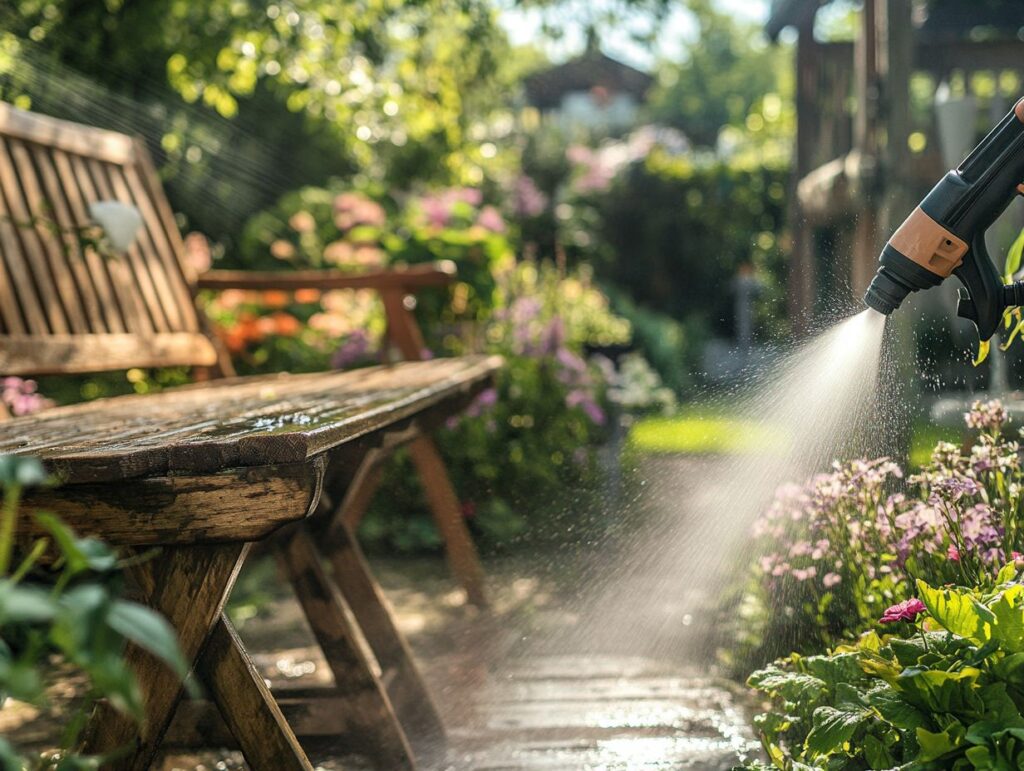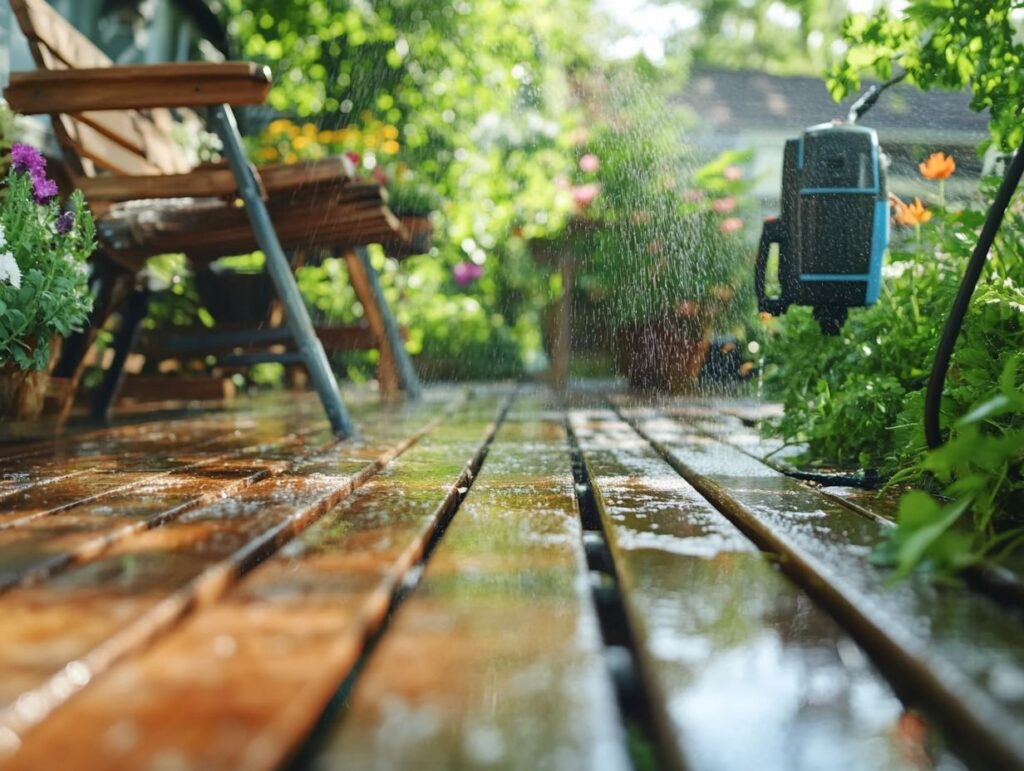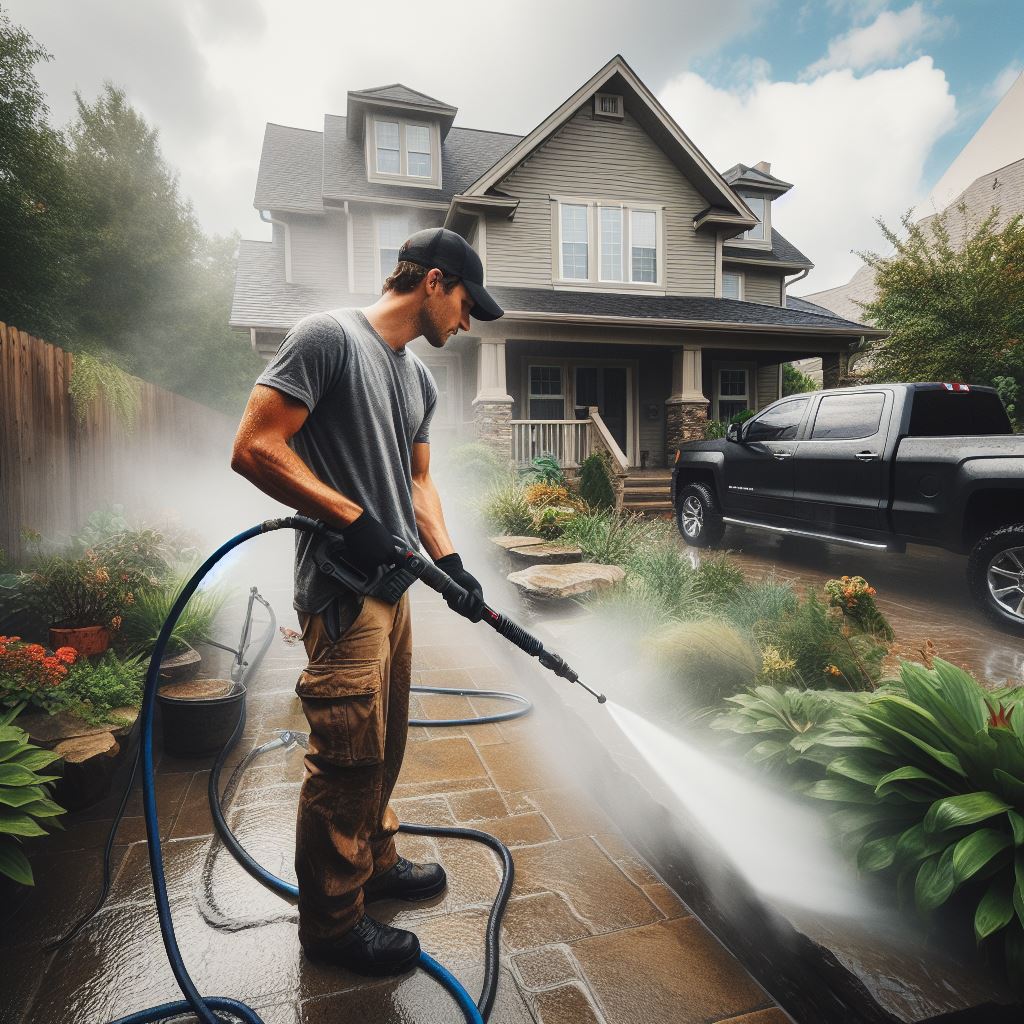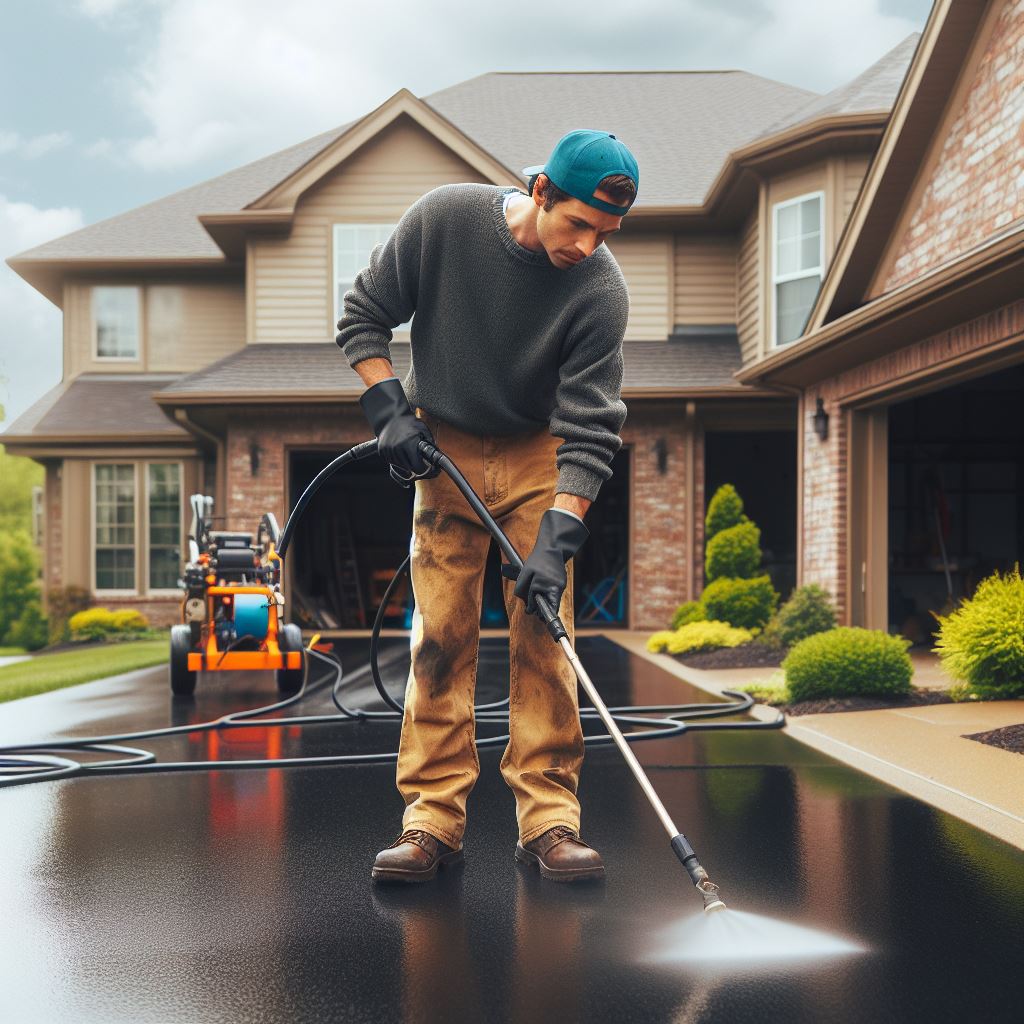Keeping your garden furniture clean and well-maintained is vital to ensuring its longevity and appearance. Soft pressure washing is a gentle yet effective way to blast away dirt, grime, and mildew without harming those delicate materials.
You’ll discover all the benefits of soft pressure washing, from preserving the quality of your furniture to practical steps for preparing and executing the cleaning process. Plus, you’ll pick up some handy tips for maintaining your furniture in the long run so it looks fantastic every season.

What Makes Soft Pressure Washing The Best Choice For Your Garden Furniture?
Soft pressure washing is a fantastic and gentle cleaning method that boosts the longevity and look of your garden furniture. This technique uses just the right amount of water pressure to safely wash away dirt, grime, mildew, and other gunk without harming the materials, whether wood, plastic, or metal.
Adding this cleaning method to your outdoor maintenance routine will restore the shine to your patio furniture and protect it from the wear and tear caused by seasonal changes and sun exposure.
Gentle and Effective Cleaning
Soft pressure washing is all about gentle and effective cleaning, making it a fantastic choice for your outdoor furniture. It strikes the perfect balance between getting rid of dirt and being gentle enough to preserve the integrity of the materials.
Choosing the proper cleaning method is critical, especially when dealing with wood, plastic, and metal materials. Each surface needs pressure settings and techniques to avoid damage while still getting clean. For example, wooden furniture does best with low-pressure settings to keep its finish intact, while plastic can handle more pressure to tackle that stubborn grime. Metal furniture? It shines with a combo of pressure washing and the proper detergents, which can help ward off rust and corrosion.
In the end, keeping your outdoor space clean not only boosts its aesthetic appeal but also extends the lifespan of your furnishings. So, investing in the proper cleaning strategy is worth it.
Preserving the Quality of Furniture
Preserving the quality of your garden furniture is vital to its longevity, and soft-pressure washing is a game changer in that maintenance routine.
This gentle yet effective cleaning technique removes dirt, grime, and mould and helps bring back your furniture’s original charm, making it all the more inviting for those outdoor gatherings you love.
Remember, different types of furniture—whether wooden, metal, or plastic—need tailored care. For example, regular soft-pressure washing can help prevent wood from splintering, metal from rusting, and plastic from fading.
After washing, don’t forget to apply protective sealants; they can boost your furniture’s durability by acting as a barrier against the elements. Incorporating routine inspections and timely repairs can make a huge difference in keeping your outdoor furnishings looking great and structurally sound.
Preparing for Soft Pressure Washing
Preparing for your soft-pressure washing session is critical to getting the best cleaning results while keeping things safe and efficient. You’ll want to gather all your tools and materials, like a pressure washer with the correct nozzle and the cleaning solutions you’ll need.
Don’t forget to take the necessary safety precautions to protect yourself and your outdoor space while you’re at it!
Gathering Necessary Tools and Materials
Gathering the right tools and materials is your first step in gearing up for a successful soft-pressure washing of your garden furniture.
To get everything sparkling clean, while keeping those delicate surfaces safe, it’s essential to assemble a solid tool kit. You’ll want a reliable pressure washer with adjustable settings and specific nozzles for gentle washing. Quality cleaning brushes are necessary to reach those tricky spots and ensure no dirt is left behind.
Using eco-friendly cleaning solutions is a great way to protect your furniture’s integrity while showing off your eco-conscious side. Choosing a suitable cleaning agent for outdoor use is crucial; it helps you avoid damage and boosts the furniture’s appearance, making the whole task smoother and more efficient.
Ensuring Safety and Protection
Staying safe during soft pressure washing is crucial to preventing injuries and protecting your garden furniture.
To do this, you should always wear the proper protective gear—goggles, gloves, and sturdy footwear. This gear helps reduce the risk of injury while you’re working. Keeping your workspace clean is vital in avoiding slips and falls, especially when using cleaning agents that can make surfaces slippery.
It’s a good idea to cover nearby plants and delicate surfaces with tarps or plastic sheeting to shield them from overspray and potential damage.
Using gentle cleaning techniques and being mindful of the pressure settings will help you keep your furnishings intact while still getting clean.

Steps for Soft Pressure Washing Garden Furniture
When you follow the proper steps for soft pressure washing your garden furniture, you get to remove dirt while keeping the materials in great shape effectively. This approach leads to successful outdoor maintenance and helps your furniture look its best.
Setting Up and Adjusting Pressure
Setting up and adjusting the pressure on your pressure washer is critical for the best cleaning performance without risking damage to your garden furniture.
First, take a moment to identify the materials your furniture is made of. Different surfaces need different levels of pressure and nozzle types. For example, wood usually does better with a lower pressure setting and a broader nozzle to avoid splintering. At the same time, metal surfaces can typically handle a stronger pressure and a narrower nozzle for tackling stubborn dirt.
When adjusting the water pressure, always start at the lowest setting and gradually increase it as needed. This way, you can clean effectively without putting your furniture in harm’s way. These adjustments will help you get the best results while ensuring your outdoor furnishings stay in great shape.
Proper Techniques for Cleaning
Using the proper techniques for cleaning your garden furniture is key when you’re soft-pressure washing. It helps you get the best clean while minimizing any potential damage.
Consider using specialized cleaning brushes to amp up your dirt removal game. A good scrub with the right brush can tackle stubborn stains and grime. Just make sure you pick a brush with bristles that are gentle enough not to scratch but still tough enough to lift the debris.
Rinsing is also super necessary. A gentle, consistent water spray ensures that all your cleaning solutions are washed away thoroughly, avoiding any residue that might attract new dirt.
Choosing eco-friendly formulas boosts effectiveness while being kind to your furniture materials in terms of cleaning solutions. Combine all these techniques, and you have an ideal strategy for keeping your outdoor furniture looking fabulous and lasting longer.
Maintaining and Protecting Garden Furniture
Taking care of your garden furniture is vital to keeping it looking great and working well for years. It’s all about regular cleaning and protective measures to ensure it stays in top shape.
Tips for Long-Term Maintenance
Implementing tips for the long-term maintenance of your garden furniture can boost its lifespan and appearance, making it an investment you’ll want to protect.
To achieve this, it’s essential to set up a regular cleaning routine. Ideally, you should wipe down the surfaces weekly to prevent dirt from building up. Monthly inspections are also a great idea; they help you spot any signs of wear early on so you can tackle repairs before they become more significant.
At the start of each season, applying protective sealants or using covers can create a barrier against the elements, keeping your furniture looking pristine.
Don’t forget to use care products suited to the material—whether wood, metal, or plastic—because that’ll give your furniture some extra love and protection. Following a solid maintenance checklist, you can enjoy your garden furniture for years while keeping it looking fabulous.
Protective Measures Against Damage
Protective measures against damage are crucial if you want to prolong the life and appearance of your garden furniture, especially when battling the elements.
Weather-resistant materials can boost durability, ensuring your furniture can handle rain and moisture without falling apart. Incorporating UV protection is also vital in preventing fading and degradation from sunlight. This way, the vibrant colours and materials stay fresh for longer.
When the off-season rolls around, adopting smart storage practices, like using protective covers or tucking your furniture away in a sheltered spot, can significantly reduce damage risk. By implementing these strategies, you can effectively safeguard your outdoor investments and keep them looking great while maintaining their structural integrity over time.


